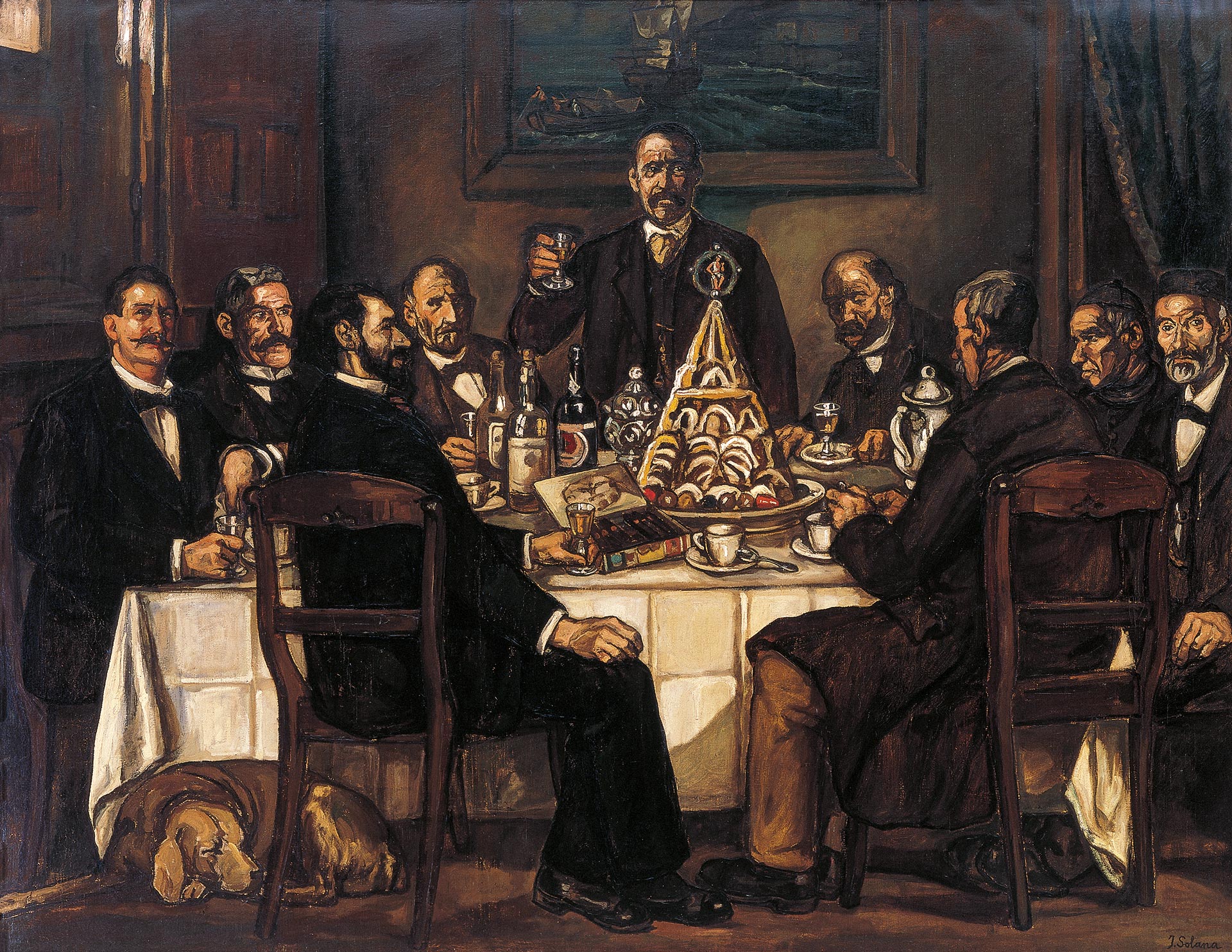
José Gutiérrez Solana (Madrid, 1886-1945)
The Émigré's Return
circa 1924
WORK INFORMATION
Oil on canvas, 164 x 210 cm
OTHER INFORMATION
Signed in the lower right-hand corner: "J. Solana" Apocryphal inscriptions on the reverse, on the stretcher: "José Gutiérrez Solana, La vuelta del indiano"; on the frame: "José Gutiérrez Solana"
The Émigré’s Return is a work that refers to a familiar social phenomenon in the north of Spain, where the return of an emigrant was celebrated with a gathering of friends, close associates and prominent figures from the local community such as the priest and the chemist, who were probably not known to the person in question but whose presence acted as witness to his triumphant return. This situation was personally familiar to Solana, whose grandfather had emigrated to Mexico.
All of them close to Solana, natives of Arredondo, neighbours and friends of his family: Antonio Manteca, El Cura, Juan Madrazo, Ángel Maza, A. Trueba, Pepe Mendizábal, José Carral, Gabriel Lavín, Francisco Gómez Pardo and José Abascal.
In the manner of a photographic snapshot, the scene here is bathed in a deathly tonality that makes it seem almost ghostly as a result of the powerful palette of muted tones that Solana employs in order to unify the composition.
Arranged on the table on a cloth that has clearly been brought out specially for this occasion are a bottle of rum, a large box of cigars and a colineta, Solana’s favourite type of tart. He depicts the figures as they propose a toast and after they have recounted their harsh experiences. Memories are close to the surface in the sad faces of those present, with their lost gazes. A look of fidelity is reserved for the dog, which is possibly the artist’s own pet, Canelo.
Solana’s method of structuring the composition around a central table allowed him to depict each figure in an individualised manner and hence convey something of their individual psychology. This approach corresponds to Solana’s method in his famous canvas The Gathering at the Café de Pombo of 1920.
The background here is a sea view, a “painting within a painting”. This would become a common device in Solana’s work, particularly in his portraits, and one that allowed him to identify the sitters visually, as we see in Ship Owner (ca.1925), The Merchant
Navy Captain (ca.1930-1934), Valentín Ruiz Senén (ca.1934), and Miguel de Unamuno (1935-1936).
María José Salazar

